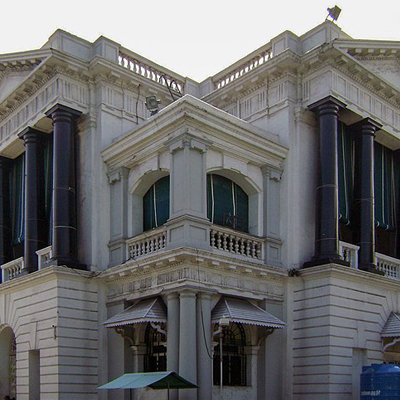Fort St. George - Chennai - Tamilnadu

The massive white structure of Fort St. George is a popular tourist attraction in the city of Chennai, Tamil Nadu. Popularly known as the “White City” of Chennai, the sole purpose of this massive fort was to establish a British stronghold on the Coromandel Coast and the rest of southern India. Since Fort St. George became the British headquarters, it was easier to develop many small towns and villages in Tamil Nadu. During this period, the now bustling city of Chennai grew up around this fort, under the name Madras, which the British had adopted. This magnificent fort is, in many ways, the first fort of British rule in India. It is also home to Clive House, the first official British residential complex, which was the residence of Lord Robert Clive, commander-in-chief and organizer of British India.
History of Fort St George –
In its early days, Fort St. George was a modest fortification, housing a garrison and trading outpost. However, as the East India Company's presence in India grew, the fort underwent significant expansion and renovation. By the early 18th century, it had become a substantial fortress, complete with towering walls, bastions, and a moat. Inside the fort's walls, an array of imposing buildings gradually emerged, including the Government House, the Supreme Court, and the Anglican Cathedral of St. Mary. These structures reflected the increasing power and wealth of the East India Company, which had effectively established itself as the governing body of British India. Throughout the 18th and 19th centuries, Fort St. George served as the administrative, military, and commercial center of the Madras Presidency. It witnessed numerous battles and sieges, including the Anglo-French Wars and the Indian Mutiny of 1857. With the advent of Indian independence in 1947, Fort St. George ceased to be a military fortress. Instead, it became the seat of the Tamil Nadu State Legislature and the Madras High Court. Today, it remains an active government complex and a popular tourist destination, offering a glimpse into the city's colonial past.
Architecture of Fort St George –
The fort's architecture is a captivating blend of European and Indian styles. The massive ramparts, built with sturdy granite blocks, are a testament to the fort's defensive strength. They echo the medieval European style of fortification, showcasing the British emphasis on security and dominance. Within the ramparts, however, a vibrant mix of architectural influences comes alive. The imposing St. Mary's Church, built in 1678, is a fine example of English Gothic architecture, with its soaring arches and stained-glass windows offering a glimpse of European religious traditions. Contrasting with the church's Gothic grandeur are the elegant facades of the administrative buildings. The Fort St. George Museum, housed within the former governor's residence, showcases a blend of classical and Renaissance styles. The arched doorways, Palladian windows, and intricate stucco work speak of the British penchant for elegance and order. The surrounding gardens, with their manicured lawns and geometric pathways, are a testament to the British love for landscaping, adding a touch of European charm to the fort. While the European influences are undeniable, the architecture of Fort St. George also bears the imprint of local traditions. The intricate carvings on the doors and windows, the use of vibrant colors on the walls, and the integration of traditional Indian motifs in the designs reveal a harmonious fusion of cultures. This blend of styles reflects the way the British East India Company adopted and adapted local practices to their own needs, creating a unique architectural language that is distinctly Chennai.
Special features of Fort St George
The oldest Anglican Church in India is called St. Mary's Church, and it is located inside the fort grounds. It was constructed between 1678 and 1680, a few decades after the fort itself, under the direction of Streynsham Master, the Agent of Madras at the time. Some of the oldest British tombstones in India are interred in this church's graveyard. They are among the first people to live in White Town. The wedding of Robert Clive and Governor Elihu Yale—who subsequently became the first American patron of Yale University—took place at St. Mary's Church. The current museum building was constructed at least a century after the remainder of the fort area. Madras Bank opened for business in this structure in 1795. Public meetings, lotteries, and some upper-class British amusement were held in the hall on the second story. Numerous artifacts from the colonial era of British, French, Scottish, and Indian origin are kept in the museum. Among the items retained are medals, guns, coins, uniforms, royal robes, and a few authentic letters, some of which were penned by Clive and Lord Cornwallis. The life-size monument of Cornwallis and the first Indian flag ever flown upon the country's independence are the museum's two principal draws. The flag has been kept, although photography is not permitted. The museum's ramparts are adorned with the cannons that Mysore King Tipu Sultan utilized.
How to reach Fort St. George?
By Air- Chennai airport is the nearest to reach Fort St. George covering 23 Km
By Train – Chennai central railway station is the nearest junction to reach Fort St. George covering 4 Km
By Road – Driving from Chennai via Grand Southern Trunk Road /Great Southern Trunk Road is the best way to reach Fort St. George covering 3 Km.